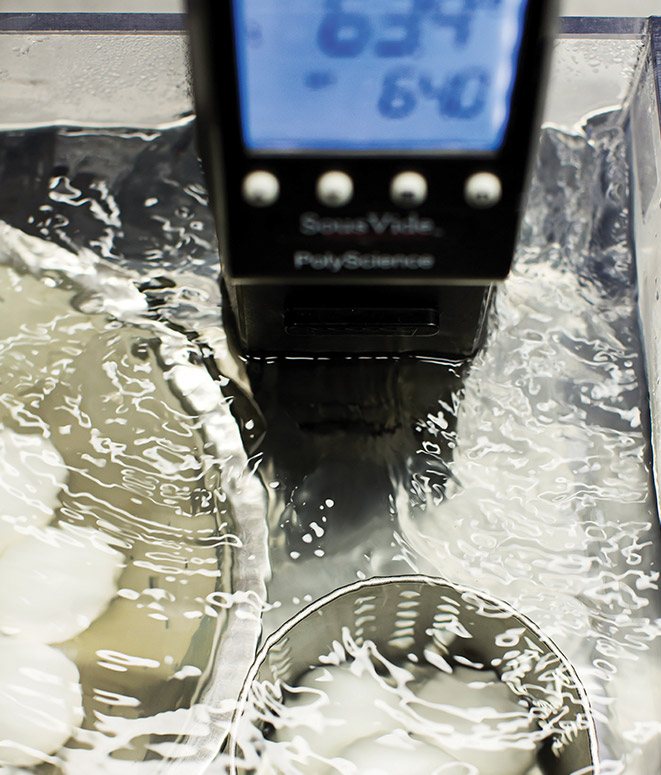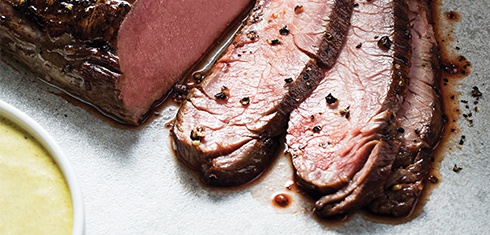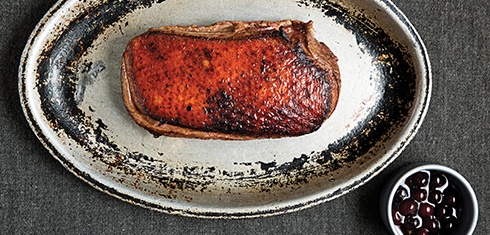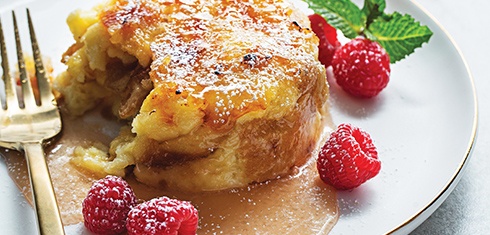BY MORGAN FECTO
When you begin to explore the world of sous vide cooking, it’s helpful to know the ground rules. Here are some guidelines around temperature and technique you’ll want to keep in mind as you get started.
BASIC TEMPERATURE TIPS
The sous vide circulator may not be as ubiquitous in your kitchen as the toaster and microwave, but it just might become a go-to after a little practice. These three tips can serve as a general framework for setting your thermometer:
- Vegetables require higher cooking temperatures.
- Vegetables that are rich in starch and pectin—such as carrots, celery root, and beets—are ideal for sous vide cooking.
- Fish, meat, and poultry are normally cooked at low temperatures—at the same temperature or a few degrees higher than the core of the protein should be when it’s done.
- Meats with more connective tissues, such as brisket, require low temperatures and longer cook times for juicy, tender results.
Remember: When cooking sous vide, always stick to the recipe. (For help finding one to try, explore our full index of sous vide recipes.)
IT’S IN THE BAG
Knowing your way around a sous vide pouch is an essential part of successful sous vide cooking. Read on for tips about what to add to the pouch (and what to avoid), as well as ways to think outside the bag.
- Acidic marinades (think lemon or vinegar) break down the proteins in meat in a way that can ruin texture. Similarly, ingredients with lots of enzymes, such as pineapples, papaya, and ginger, can have an adverse effect on your steak when added to the sous vide pouch. Although they’re not great for pairing with proteins, adding acids to a pouch with fruits or vegetables is a quick method for pickling.
- To cook the perfect sous vide egg, the natural shell functions as a built-in sous vide pouch. A simple perforated metal container does the trick of allowing the water to circulate freely while protecting the eggs.
- Using a Mason jar to cook cake batter with sous vide’s low and slow method allows for a gooey, decadent, “undercooked” texture—the “molten lava” cake effect—while pasteurizing eggs so they’re safe to eat.
- For cakes, crème brûlées, or mini frittatas, a Mason jar doubles as a cooking vessel and a playful serving dish—just twist off the lid and dig in. It’s one of our favorite ways to cut down on plating time.
Related Articles VIEW ALL ARTICLES
Tips & Techniques
A Guide to Sous Vide Sauces
Every home chef should count these sous vide sauces among their kitchen secrets.
Read More >Tips & Techniques
How to Sous Vide: Octopus
The sous vide method is the ultimate secret weapon for transforming octopus into an impossibly tender, delicate dish.
Read More >Tips & Techniques
5 Commandments of Sous Vide Cooking
Trying sous vide cooking for the first time? Learn how to do it right with helpful sous vide tips from the experts at CREA and Cuisine Solutions, the world-renowned masters of the method.
Read More >Related RecipesView All Recipes
Sous Vide Flank Steak
 Beginner
BeginnerJuicy, flavorful, and perfectly done: Follow this sous vide flank steak recipe for red-meat nirvana.
Sous Vide Duck
 Beginner
BeginnerJuicy, faintly tart blueberry is a fitting counterpoint to rich, flavorful duck. Your taste buds will thank you.
Buy the Magazine
Buy NowDedicated to the Art & Science of Sous-Vide
The first publication devoted to the art and science of sous vide cooking, featuring innovative recipes, visual inspiration, expert techniques for cooking sous vide at home, and exclusive interviews with world-class chefs.




